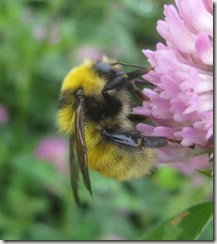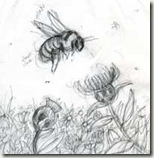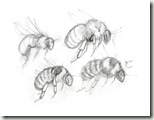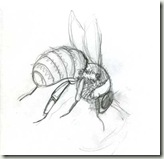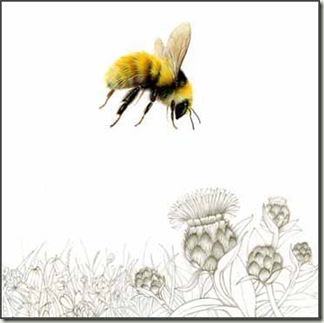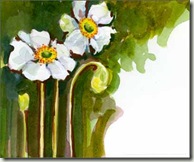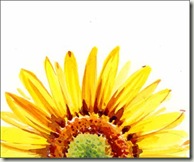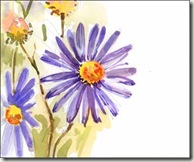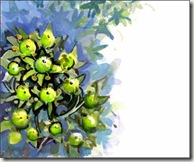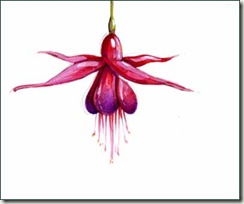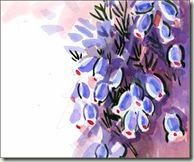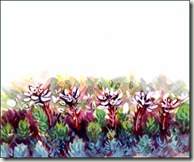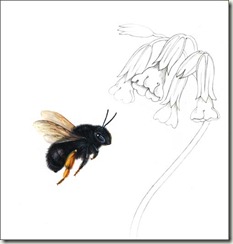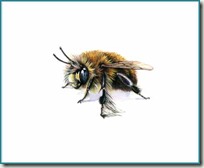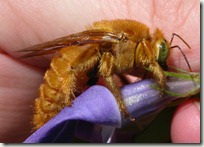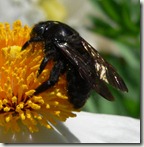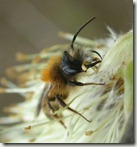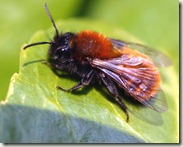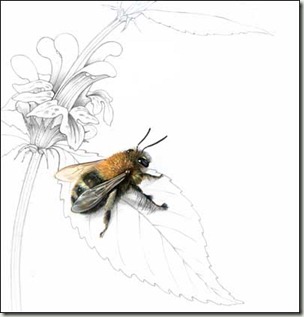As I said in a recent post my Dad was not one to mope about ..so its back to work, back to bees, commissions and design work. In between all the ups and downs of the last couple of weeks there have some good things happening on the bee front. Excitingly I will be teaming up with the Bee Guardians next year for some projects.
Also for next year more exhibitions are planned at Easton Walled Gardens and Nature in Art, both a week long this time and with painting workshops attached. There are some talks, some one day exhibitions and painting classes planned. On the products front there may be some ceramics, some jewelry and more prints and cards.
And I have a million other ideas. Waiting in the wings there may be a house and a garden, with….joy of joys….a workshop. Busy is good. And on Monday 10th Oct I will be at the London Honey Show, 6 –9 pm with prints, books and cards .. will be fun. More details tomorrow.
Bombus Hortorum and Honeysuckle But right now I am working on B hortorum and Honeysuckle a commission for Peter and Di. In preparation for teaching people about painting insects and bees next year I decided to record a step by step for this one. Here are the first few stages of the bee. Sketches for pose and ideas for flowers, positions etc… but all may change:
Positioning on the paper:
First Colours: built up with directional strokes and refining as I go
I had roughed in the shapes of the flowers with a few faint lines to be able to position the bee. I use a soft pencil and very light strokes so that I can erase what I don’t want.
Now I start to think about how they will really work with the bee. It’s best to experiment on tracing paper first. The paper underneath really must be kept clean for this sort of work!! aggghhh…..
So close after my father’s death there is an extra poignancy to painting this bee, because I based the design on my observations of Bombus hortorum, the Garden Bumble Bee, which I watched for hours on Dad’s honeysuckle last year.
I had seen how they hold onto the sides of the flower and sometimes rest their back legs on the lower petal. So I decided to show this one on its approach flight, front feet outstretched to grasp the sides of the upper petal.
Tongue, I think, will be outstretched. The long tongue is such a feature of these bees and allows them to access nectar from these long tubular flowers. But I am not quite sure yet. I do change things as I go quite a bit!.. paper permitting :). Sometimes it’s such a struggle to keep that pristine white paper clean!
Bombus hortorum, Dad’s garden, 2010

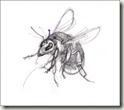
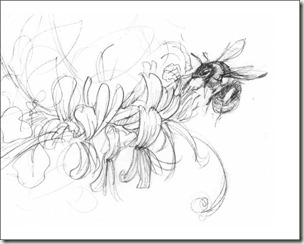
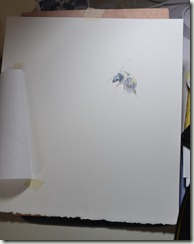
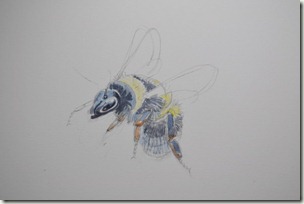

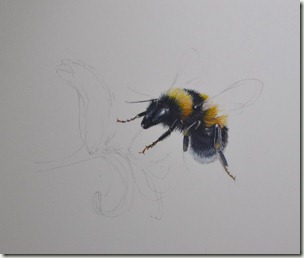
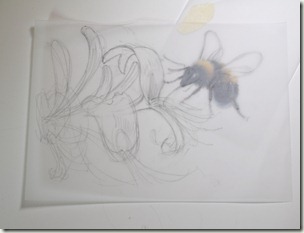

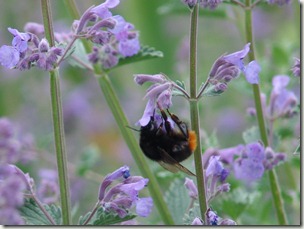
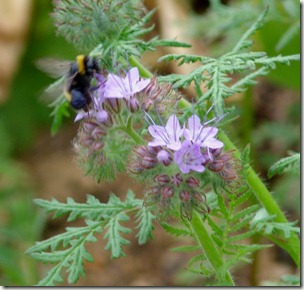
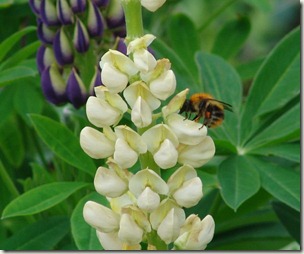
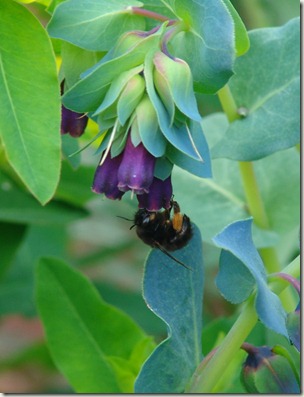
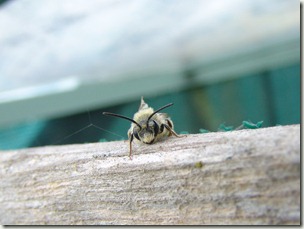
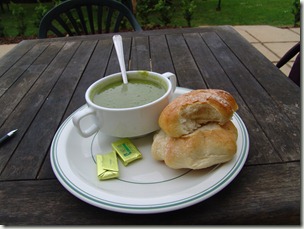

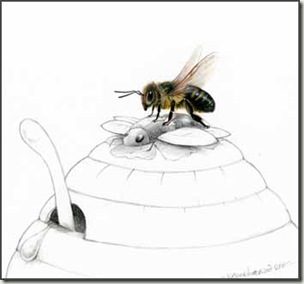

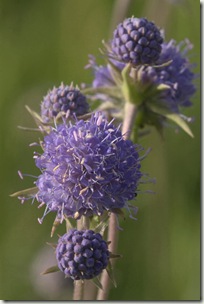
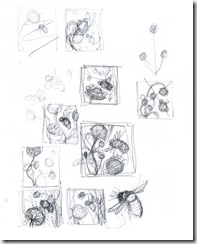

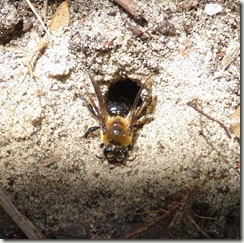

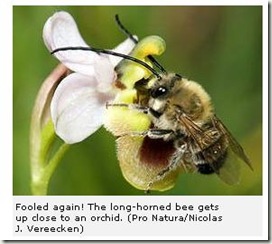

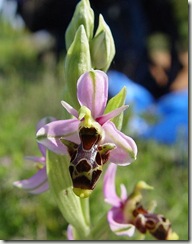


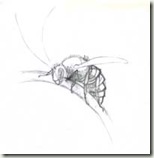
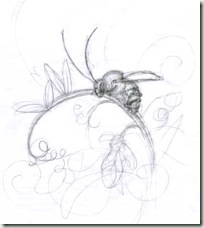
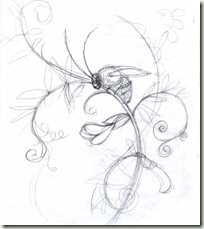
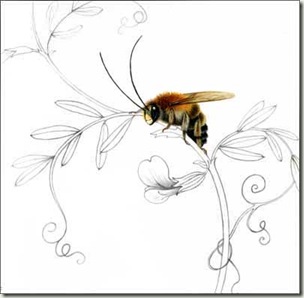
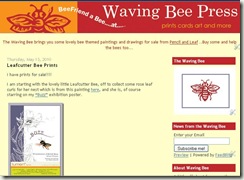
![leafcutter print sml[3] leafcutter print sml[3]](http://lh5.ggpht.com/_j1cdMMQnYns/S-xSKVTXzqI/AAAAAAAAI3E/rCAsmBqC9oU/leafcutter%20print%20sml%5B3%5D_thumb%5B2%5D.jpg?imgmax=800)
